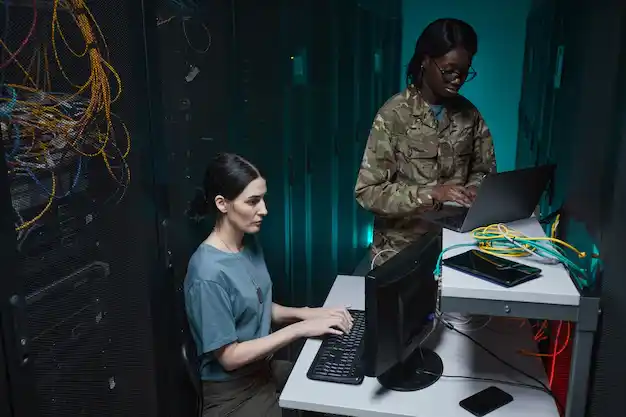South African National Defence Force’s Cyber Command, which was formed around 8 years ago to detects and identifies cyber threats is facing challenges.
The Cyber Command doesn’t have enough money to purchase adequate cybersecurity software or get specialised training says Brigadier General Mafi Mgobozi, who heads up the fledgling Cyber Command.
Brigadier General Mafi Mgobozi said during a Parliamentary oversight committee late last year that the Command is able to be proactive when responding to cyberattacks and can undertake threat analysis.
This includes detection and identification of cyber threats; development of threat taxonomy to predict possible threats; monitor adversary trends and the same for supply chain emerging threats.
South Africa’s cyber defence capacity at SANDF level has three strategic goals – capability development; cyber security awareness, research and training and national as well as international co-ordination and collaboration according to the one-star’s presentation.
But has made little progress.
South Africa’s National Cybersecurity Policy Framework was published in 2015. It makes the department of defence responsible for the “coordination, accountability, and implementation of cyber defence measures” in South Africa.
But the Cyber Command’s effectiveness and progress have been marred by funding issue, which has been impacting the SANDF as a whole – together with a lack of human resources and technological expertise.
The Cyber Command tasked with protecting South Africa from cyberwarfare targeting NCII has “not yet acquired suitable facilities due to funding” and “is accommodated at Defence Intelligence HQ with limited space.” The General said.
The Cyber Command is running on “limited space” with no dedicated facilities.
Although, the Cyber Command’s main task is to monitor external and internal threats, it hasn’t managed to achieve most of its other objectives, including digitising the military, cyber-weaponising the DOD, or properly developing research, development, and innovation capacity.
The “Cyber Command is currently partially operational since it is not yet fully capacitated,” according to the parliamentary presentation, with the SANDF highlighting major challenges.
Funding for equipment, training, and personnel is inadequate, with the Cyber Command even struggling to obtain proper software, blaming the “dollar/rand exchange”. Specialised training within the field of cybersecurity has also been hard to attain, said the Cyber Command, while the Cyber Defence Strategy and Structure, still to be approved, also remains a hurdle.
